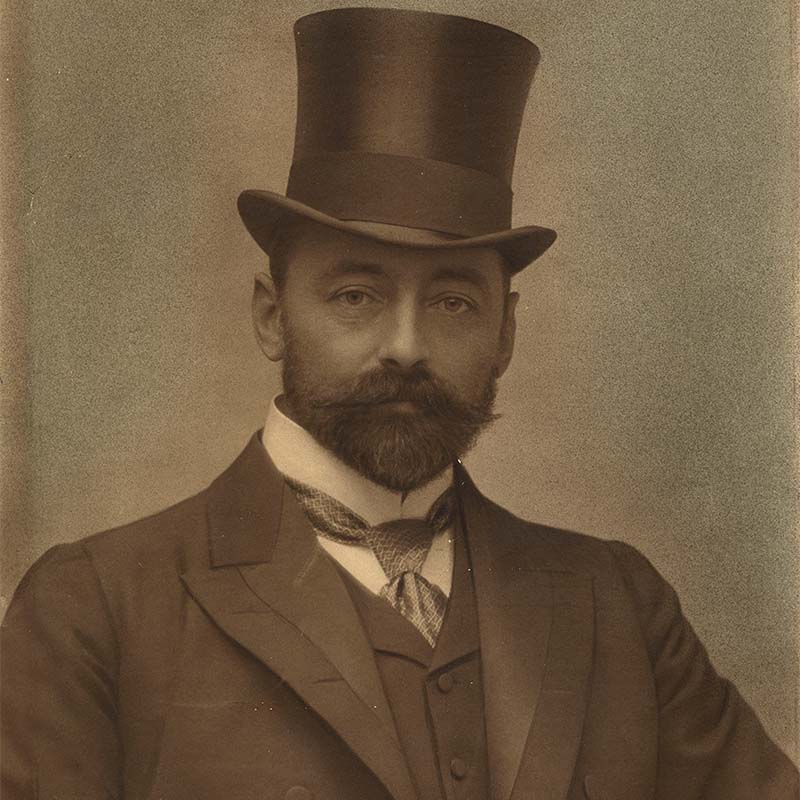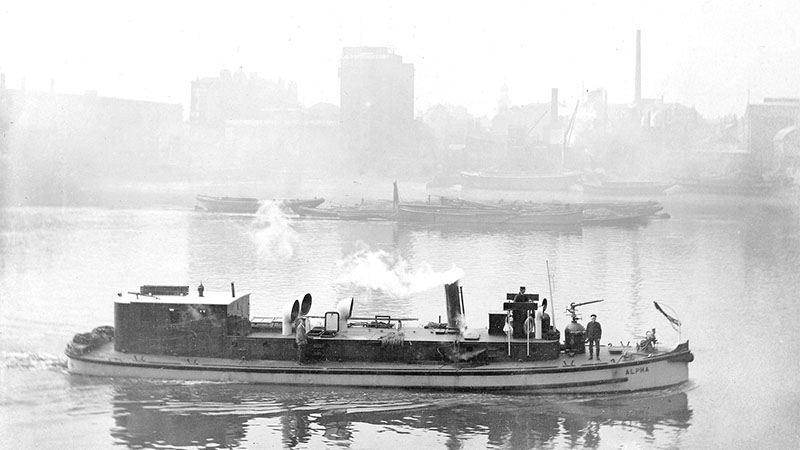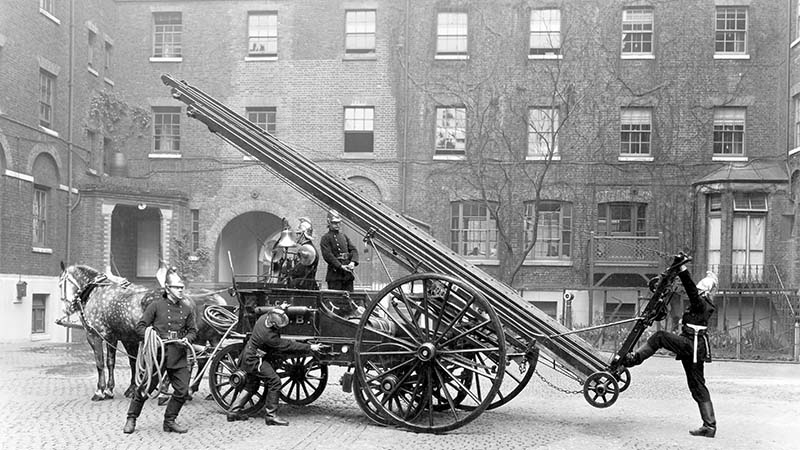Lionel de Latour Wells was born in Kolkata in India on the 31 January 1859. Educated at Cheltenham, at the age of 12 he joined the Royal Navy as a cadet in 1871.

Appointed a midshipman at the age of 14, he advanced to sub-lieutenant by 19. As a lieutenant, he served on HMS Iris and saw service in the Anglo-Egyptian War of 1882. He was later appointed to the torpedo school and served aboard both HMS Raleigh and HMS Agincourt. He was promoted to commander in June 1892.
In 1896, Wells was selected by the London County Council (LCC) as the Chief Officer of the Metropolitan Fire Brigade (MFB). Aged 37, he moved into the Brigade's Southwark headquarters. Although full of excitement and enthusiasm, but with little knowledge of firefighting. However, Wells hit the ground running. Given his naval background, he turned his hand first to London’s fire-floats and their need for improvement.

Wells drew up the plans for a new fire-float and radically improved the organisation of the river service. The new Alpha II vessel had both pumping and propelling machinery in one hull. The licenced watermen, who were the coxswains in charge of steering the fire-floats, were now required to live at the river stations. The river crews were also combined so that there would always be a crew on-board a craft, ready to go.
Wells also had a new approach to fire brigade discipline. He changed the harsh conditions firefighters had to endure. For example, he allowed married men to go home for meals, which for most meant going upstairs to their family quarters at the fire station.
Wells was both intelligent and inventive. He brought forward radical plans, but struggled to persuade the LCC to enlarge the Brigade. His ideas were often built on practices already introduced into other fire brigades. At the time escape ladders were stationed in the street at night. This meant they had to be wheeled to fires by one or two firefighters. Other brigades were using escape carts to transport ladders to the site of a fire. Wells decided to improve on the design of the carts before introducing them in London. This meant escape ladders could be easily transported to the scene of a fire. He also designed a longer, 75-foot ladder to assist with rescues and he replaced MFB’s leather hoses with lighter, and more flexible, canvas ones.

A year after his appointment, there were 63 manual fire engines and 59 steamers, both drawn by teams of horses. On Wells’ recommendation the LCC changed the recruitment criteria for men wanting to join the Brigade. It would no longer compulsory to have naval experience. With a growing and expanding London, it was decided that firefighters should have a wider understanding of building construction. This included the dangers in the growth in the use of electricity. This new training was added to their recruit training courses.
In 1897, the City of London suffered a disastrous fire at Cripplegate. Over 50 warehouses, some six storeys high, were consumed in the flames. Almost every London steam fire engine was engaged at the blaze and 228 firefighters fought the fire. Following an inquest, the City Coroner said London's fire engines were not as good as they might have been. The Inquest jury recommended more fire alarms and better hydrants. They also advised that firefighters should familiarise themselves with the layout and construction of warehouses.
Wells continued at the forefront of innovation and progress. In 1898 he introduced the supply of hot tea and coffee to his firefighters at large fires. The canteen-van had arrived. The following year electric bells were fitted to fire stations, to alert crews when an emergency call was received. He extended the bells into the firefighters’ family accommodation, above the fire station, to summon them at night. In 1899, Wells withdrew the last manual fire engine from MFB service.
However, another City blaze that would lead Wells to consider his future in MFB. It followed criticism after nine people died in a fire on Queen Victoria Street in 1902, involving a five-storey office building. There was a delay in summoning the Brigade but, when they arrived, their ladders could not reach ten women trapped on the upper floor. When the Brigade’s 70-foot escape arrived from Southwark, it facilitated the rescue of two of them. But it was too late for eight women and a young man, who had rushed into the burning building to assist them.
The Press published articles blaming both the LCC and the Brigade for its failings, their attention falling on Captain Wells. In total contrast, the Inquest jury gave the Brigade unqualified praise for their actions at the fire. Despite this, the Press continued to point blame at Wells and his Brigade.
Wells sought to learn lessons from the incident. He ordered that fire horses were no longer to be kept in their stables. They would now be kept harnessed to the station’s escape cart for two hours at a time to improve the time it took to get to a fire. Additionally, Wells introduced a French fire brigade ladder called a hook ladder. It was about 13 feet in length and weighed 28 pounds. It had a long-serrated hook at the top, allowing firefighters to hook the ladder onto a building’s window sill. When one or two ladders were used, and firefighters could scale the outside of a building to any height. Armed with a rescue rope, firefighters could then lower a person in need of rescue to the ground.

In 1903, Wells introduced the first bells on all fire engines to warn other traffic to make way. Next, he introduced the first, small, motorised fire tender. Fitted with a tank of water, the water was expelled from the hose-reel under the pressure of carbon dioxide gas. He also created of the 1898 ‘Scheme for the Protection of London against Fire’. It recommended the construction of more fire stations and suggested ways of increasing the Brigade's efficiency. This work was completed in 1908. He held patents for a number of Brigade improvements, including the horsed escape cart, and telephone fire alarm.
Despite these dramatic improvements in the efficiency of the Brigade, the Press continued its criticism of Wells after the Queen Victoria Street fire. Eventually, 12 months of public scrutiny took its toll, and he resigned in 1903.
During the First World War, Wells was recalled to Royal Navy with the rank of Captain and promoted to Commodore in 1917. He was also awarded the Companion of the Order of St Michael and St George (or CMG) in 1916, the Companion of the Bath (CB) in 1918, the Commander of the Most Excellent Order of the British Empire (CBE) in 1919. He was knighted in 1921 and died on 15 March 1929, aged 70.
This article was researched and written by museum volunteer David P.